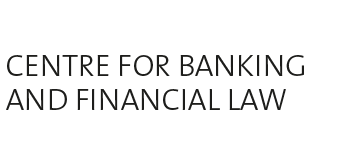Retrocessions
An analysis of the characteristics of churning activities

Sébastien Pittet
(Translated by DeepL)
There is nothing new about the fact that an asset manager who engages in churning is liable to a criminal conviction (disloyal management – art. 158 of the Swiss Criminal Code). In its ruling 6B_1118/2023 of 26 April 2024, the Swiss Federal Supreme Court analysed in detail the evidence that would allow a churning activity to be identified or ruled out, i.e. carrying out a large number of transactions with the sole aim of increasing retrocessions.
Between 2003 and 2005, three clients had an asset management relationship with an independent asset manager. The three clients’ assets were deposited with the same custodian bank. The asset manager is remunerated for his activities by fees corresponding to 0.5 % of the assets under management. At the same time, he also receives retrocessions from the custodian bank, calculated as a percentage of the amount invested per transaction. In other words, the more transactions the manager carries out, the more retrocessions he receives.
The management activity resulted in very substantial losses for clients, and the manager was accused of churning. The asset manager was sentenced to a custodial sentence at first instance, then acquitted at second instance. The case went to the Federal Court for the first time in 2019. Our High Court accepted the appeal and criticised the Zurich Obergericht for not having called in a financial expert to reach its decision (TF 6B_1113/2018). Four years later, following an expert appraisal, the Obergericht this time sentenced the manager to a 16-month suspended prison sentence for qualified disloyal management (art. 158 of the Swiss Criminal Code). The manager is appealing this decision to the Federal Court.
In the case of retrocessions, two situations in particular may lead to criminal liability on the part of the service provider : (i) breach of the obligation to render an account (see in particular TF 6B_689/2016 of 14 August 2018, summary in : Fischer, cdbf/1030) and (ii) breach of the obligation to make restitution. It is mainly this second alternative that interests us here.
When a manager carries out transactions not in the interests of his client, but in order to increase his remuneration, his conduct may constitute a qualified act of unfair management. This is particularly true in the case of churning, which the Federal Court has defined in this ruling.
The first indicator of possible churning activity is the Turn-Over-Rate (TOR). The TOR corresponds to the total value of transactions during a given period, divided by the average value of the portfolio during that period. On the basis of American case law and developments at the Obergericht, the Federal Court concluded that, for a conservative strategy, an annualised TOR of more than 6 constitutes a churning index. Depending on the strategy chosen, a slightly higher TOR is permissible.
In this case, for the first client, the total amount of transactions over a four-month period was CHF 6,647,554, and the average value of the portfolio over this period was CHF 983,284. For these four months, the TOR is therefore 6.76 (6,647,554/983,284), equivalent to an annualised TOR of 20.28 (for the other two clients, the annualised TOR is 13.8 and 55.11). These results are well above 6, suggesting churning activity.
The second indicator of churning activity is the Cost-to-Equity-Ratio (CER). This ratio corresponds to transaction costs divided by the average value of the portfolio. This calculation is used to determine the increase in capital required to generate a profit after deducting costs. For a conservative strategy, an annualised ratio in excess of 12 % is an indication of churning.
In this case, for the first client, transaction costs over a four-month period amount to CHF 165,080 (bank charges and retrocessions), and the average value of the portfolio to CHF 983,284. For these four months, the CER corresponds to 16.78 % (165,080/983,284), which is equivalent to an annualised CER of 50.4 % (for the other two clients, the annualised CER is 40.75 % and 126.6 %). This means that an annual return in excess of 50.4 % was required just to cover costs. These results are well above 12 %, again suggesting churning activity.
The final indicator (considered secondary) is the Commission-to-Investment-Ratio (CIR). This ratio corresponds to transaction costs divided by the initial value of the investment. In principle, the CIR should not exceed 12.8 %.
In this case, for the first client, transaction-related costs over a four-month period amount to CHF 165,080 (bank charges and retrocessions), and the initial value of the investment is CHF 1,307,918. The CIR is therefore 12.62 (for the other two clients, the CIR is 11.7 % and 30.75 %). Even though the 12.8 % threshold is not exceeded for the three clients, the high CIR ratio suggests potential churning activity.
In view of the indications arising from the various criteria set out above, the Federal Court confirms the Obergericht’s findings and penalty, as the subjective constituent elements of the offence of unfair management are also met.
This judgment provides an interesting list of the relevant criteria for qualifying an activity as churning, going further than the BGE 142 IV 346. Although these criteria already existed in a more or less equivalent manner (see in particular the SFBC Annual Report 2007, pp. 86 et seq.), this decision provides some interesting pointers as to the maximum thresholds that may trigger churning activity.
This behaviour is obviously also prohibited under civil law. A manager who engages in such activity breaches his duty of loyalty and accountability (art. 398 and 400 of the Swiss Code of Obligations). In regulatory terms, churning is prohibited by art. 27 let. a OSFin (and, prior to the LSFin, by the former Circular 2009/1 on asset management mandates). In our opinion, the criteria and thresholds developed in this judgment could also be used to interpret art. 27 let. a OSFin.



